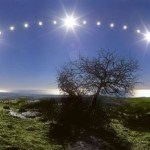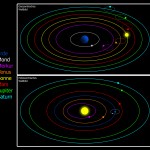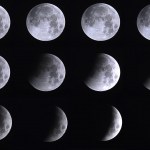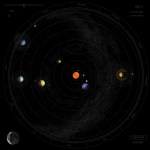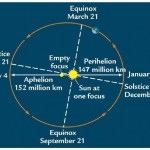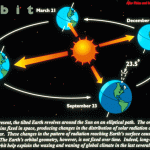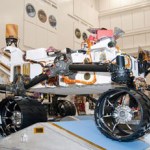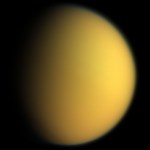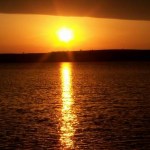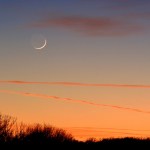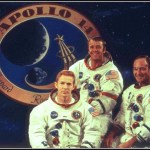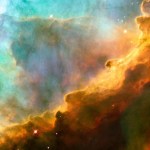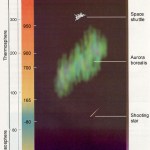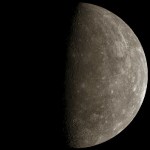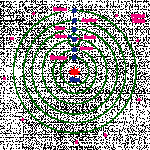Solar System
Mr. Harley: Your impatience is quite understandable.
Klaatu: I'm impatient with stupidity. My people have learned to live without it.
Mr. Harley: I'm afraid my people haven't. I'm very sorry... I wish it were otherwise.
-The Day The Earth Stood Still, 1951
People love to talk about the constancy of the natural phenomena. Every 24 hours, from anywhere not within either the Arctic or Antarctic circles, for instance, there's one sunrise and one sunset.
Image credit: Danilo Pivato.
And, of course, there are two high tides and two low tides every day.
The Earth rotates on its axis, and revolves…
"Twenty years from now you will be more disappointed by the things that you didn't do than by the ones you did do. So throw off the bowlines. Sail away from the safe harbor. Catch the trade winds in your sails. Explore. Dream. Discover." -Mark Twain
You've all heard of Kepler before, including the exoplanet-finding spacecraft named after the famed 17th Century astronomer. Johannes Kepler is probably most famous for his laws governing the motion of the planets, which cemented the heliocentric model -- and not the geocentric model -- as the best description for the motions of objects in our…
"How'd the moon get here? Look, you pinheads who attacked me for this, you guys are just desperate. How'd the moon get here? How'd the sun get there? How'd it get there? Can you explain that to me? How come we have that and Mars doesn't have it?" -Bill O'Reilly
Once upon a time, humans looked at the tides -- going out and coming in -- and we had no idea what caused them. At high tides, the sea level would rise, and the coast would get swept up by the oceans, while at low tides, the water would recede, leaving tidepools behind.
Image credit: smugmug.com.
Low tides and high tides would each…
"With hue like that when some great painter dips
His pencil in the gloom of earthquake and eclipse." -Percy Bysshe Shelley
There may be no greater sight for the naked-eye astronomer than a total lunar eclipse. Normally, we get one or two of these a year, and the same wonderful thing happens at each one.
Image credit: Amateur Astronomical Society of Rhode Island.
If you were standing on the Moon, you'd start to see the Earth begin to cover part of the Sun. As the Earth blocks more and more of the Sun, there would be less sunlight landing on the Moon, and one side of it appears to darken…
"I think it's one of the scars in our culture that we have too high an opinion of ourselves. We align ourselves with the angels instead of the higher primates." -Angela Carter
When I'm getting clear nights, sometimes I'll wake up in the middle of them, and just go and look outside; the allure of the sky is too much. It reminds me of a Sufjan Stevens song,
He Woke Me Up Again.During the winters in Portland, that's -- to put it mildly -- a rare occurrence. But this morning, something almost made up for it. I came across the best Flash Solar System app I've ever seen over at dynamicdiagrams.com…
"Cheers to a new year and another chance for us to get it right." -Oprah Winfrey
We've just completed another trip around the Sun, both in terms of the calendar year, and also the way astronomers measure it, by returning once again to perihelion, the closest point in our orbit to the Sun.
If you look up at the sky, and you watch the Sun, the Moon, and the planets all move through it, you'll notice something spectacular.
Image credit: Larry Landolfi.
To within a very small separation in the sky, the Sun, the Moon, and each of the planets (Venus and Saturn in this picture) all follow the…
"The moon is eclipsed through the interposition of the earth... Anaxagoras was the first to set out distinctly the facts about eclipses and illuminations."
-Euripides, in Hippolytus, 431 B.C.
As we all know, the Earth revolves around the Sun while it rotates on its axis. The rotation causes day-and-night every 24 hours, while the revolution causes our seasons and our calendar year.
You'll notice, in the image above, that the Summer Solstice -- June 21st -- is when the North Pole of the Earth is tilted most directly towards the Sun, and that the Winter Solstice -- December 21st -- is when it'…
By Dr. Rosalba Bonaccorsi
Environmental Scientist at the Carl Sagan Center for the Study of Life in the Universe, SETI Institute, and Gail Jacobs
Rosalba, what first sparked your interest in science?
I've always had big dreams -- even as a young girl. As soon as I started to walk, I took an interest in conducting experiments with whatever was available around such as household plants and various chemical compounds. I'm lucky I didn't end up poisoned or otherwise hurt! I remember dismantling alarm clocks. I was so curious!
As a young girl, I was in poor health and as a result spent a lot of…
"It is all a matter of time scale. An event that would be unthinkable in a hundred years may be inevitable in a hundred million." -Carl Sagan
There's some speculation that NASA, later this week, might announce evidence for life on Saturn's moon Titan.
I'm not going to comment on the speculation, but it's worth asking the question, scientifically, "How would the Universe make life, from scratch?"
Let's start by telling you what "scratch" means. If you're familiar with the story of the Universe, one of the things you know is that things were very hot and dense in the past. So hot that you…
"I have just gone over my comet computations again, and it is humiliating to perceive how very little more I know than I did seven years ago when I first did this kind of work." -Maria Mitchell, Astronomer
If you were around back in 1997, perhaps you remembered seeing Comet Hartley 2 back then, as it brightened and came close to Earth, as captured by NASA.
Unlike the other comets you know of, like Halley's Comet, Hartley 2 returns close to Earth every 6.5 years, while most comets take nearly a century!
Comet Hartley 2 doesn't look like it originates from the Kuiper Belt. Rather, it looks…
"Every man is free to rise as far as he's able or willing, but the degree to which he thinks determines the degree to which he'll rise." -Ayn Rand
We're all aware that one of the ways that human life on Earth could end, conceivably, is the same way that the dinosaurs went down.
And asteroid tracking and deflection technology is fast becoming one of the hot issues of the day. It appears so often in the news that you'd think we are at a high risk, any day, of being hit by a catastrophic asteroid.
But -- and my opinion here definitely runs against the mainstream -- I think this hysteria is…
Calvin: Why does the sky turn red as the sun sets?
Calvin's Dad: That's all the oxygen in the atmosphere catching fire.
Calvin: Where does the sun go when it sets?
Calvin's Dad: The sun sets in the west. In Arizona actually, near Flagstaff. That's why the rocks there are so red.
Calvin: Don't the people get burned up?
Calvin's Dad: No, the sun goes out as it sets. That's why it's dark at night.
Calvin: Doesn't the sun crush the whole state as it lands?
Calvin's Dad: Ha ha, of course not. Hold a quarter up. See, the sun's just about the same size.
Calvin: I thought I read that the sun was…
"Imperfection clings to a person, and if they wait till they are brushed off entirely, they would spin for ever on their axis, advancing nowhere." -Thomas Carlyle
When you take a look up at the sky, the two most prominent objects are the Sun and the Moon.
And every day, like clockwork, they rise in the East and set in the West.
Why's that?
Because the Earth rotates on its North-South axis! Not only does it rotate, but it rotates from West to East, and that's why we see everything rise in the East and set in the West over the course of a day or night.
Image Credit: Phil Hart.
It gets…
Mission control: You need to bend your knees a little more. Keep your head down.
Alan Shepard: I'm... wearing a space suit.
Mission control: Just trying to help.
Apollo 14, the third crew ever to land on the Moon, pulled one of the most iconic stunts of all time.
Along with Stuart Roosa (left) and Edgar Mitchel (right), commander Alan Shepard (center) became the first man to golf on another planet.
His famous quote, after hitting the ball squarely, was:
Miles and miles and miles.
But take a look at the video itself. It sure doesn't seem like that ball would've gone miles and miles and miles…
"Goldilocks was hungry. She tasted the porridge from the first bowl.
'This porridge is too hot!' she exclaimed.
So, she tasted the porridge from the second bowl.
'This porridge is too cold,' she said.
So, she tasted the last bowl of porridge.
'Ahhh, this porridge is just right,' she said happily and she ate it all up." -Goldilocks and the Three Bears
Life as we know it on Earth all makes great use of one particular molecule in one particular phase:
Liquid water! Having a liquid phase to water requires an atmosphere with enough pressure (and something with even 1% of Earth's atmosphere will…
By Dr. Paul EstradaPlanetary physicist at the Carl Sagan Center for the Study of Life in the Universe, SETI Institute, and Gail Jacobs
If planets are a dime a dozen, moons are less than a penny each. There are at least 139 moons just within our own solar system. Most of these are the property of the gas giant planets beyond Mars. More than just a nice accompaniment to planets, moons may have habitats in which liquid water could ebb and flow - and possibly be a suitable home for life. Planetary physicist Dr. Paul Estrada investigates how moons around gas giants are formed -- an important…
"I do not feel obliged to believe that the same God who has endowed us with sense, reason, and intellect has intended us to forgo their use." -Galileo Galilei
While practically every scientist (and 79% of Americans) accept that the Earth and the other planets go around the Sun, it isn't quite everyone. In fact, a number of people have recently pointed out the following conference to me.
That's right, this November, a group of people are going to get together and try to put together as convincing an argument as possible for geocentrism, or the model that the Sun (and all the other planets)…
"I saw for the first time the earth's shape. I could easily see the shores of continents, islands, great rivers, folds of the terrain, large bodies of water. The horizon is dark blue, smoothly turning to black. . . the feelings which filled me I can express with one word--joy." -Yuri Gagarin
It takes a tremendous amount of energy to do any type of heavy lifting, and the most extreme example of this is lifting something all the way up off of the Earth, out of the atmosphere, and into space!
And once you're up there, at least 300 km above the Earth's surface, the sights you've got are bound to…
They will see us waving from such great heights
"Come down now," they'll say.
But everything looks perfect from far away
"Come down now," but we'll stay. -The Postal Service
It isn't the weekend, but I'd feel terrible showing you these pictures without giving you the right song to take you through it, so here's Iron & Wine's cover of a great song by The Postal Service:
Such Great Heights.Back in the early 1970s, the United States sent the first spacecraft, successfully, towards Mercury, the innermost planet of our Solar System. Before losing its functionality, Mariner 10 managed to…
"Either you repeat the same conventional doctrines everybody is saying, or else you say something true, and it will sound like it's from Neptune."
-Noam Chomsky
You might remember when the Solar System had nine planets, but as unbelievable as it sounds, for a very long time we only had six.
Why? Because only the planets Mercury, Venus, Mars, Jupiter, and Saturn are visible from Earth with the naked eye. Even though the telescope was invented in the early 1600s,
it wasn't until 1781 that a planet out beyond Saturn was found! When William Herschel finally discovered Uranus, it was absolutely…
